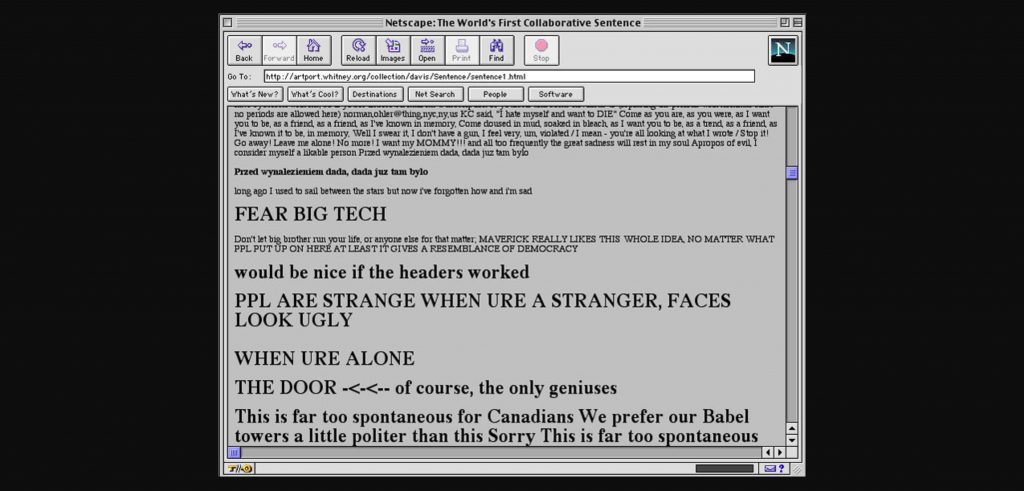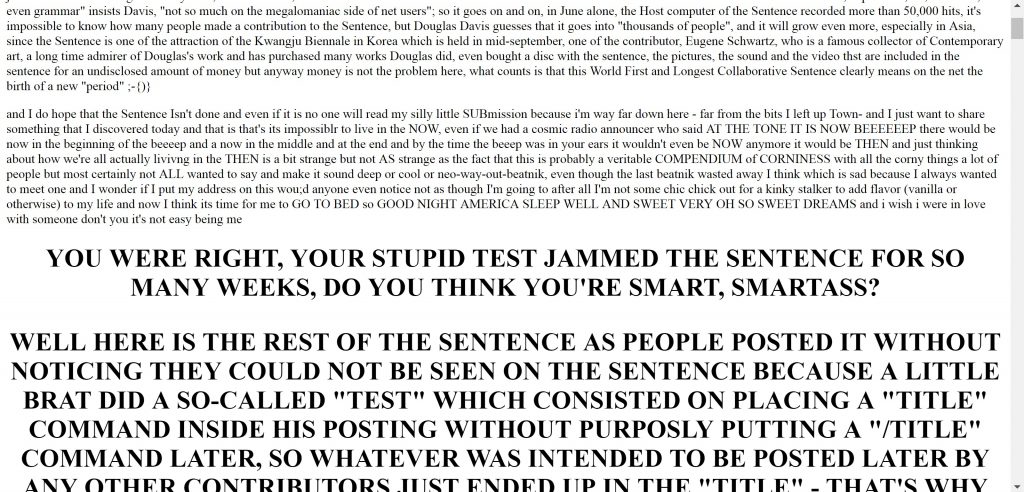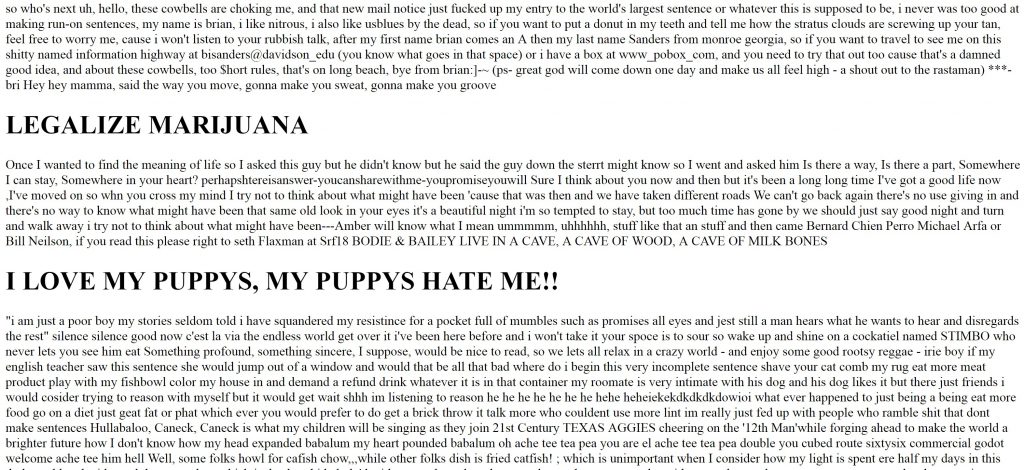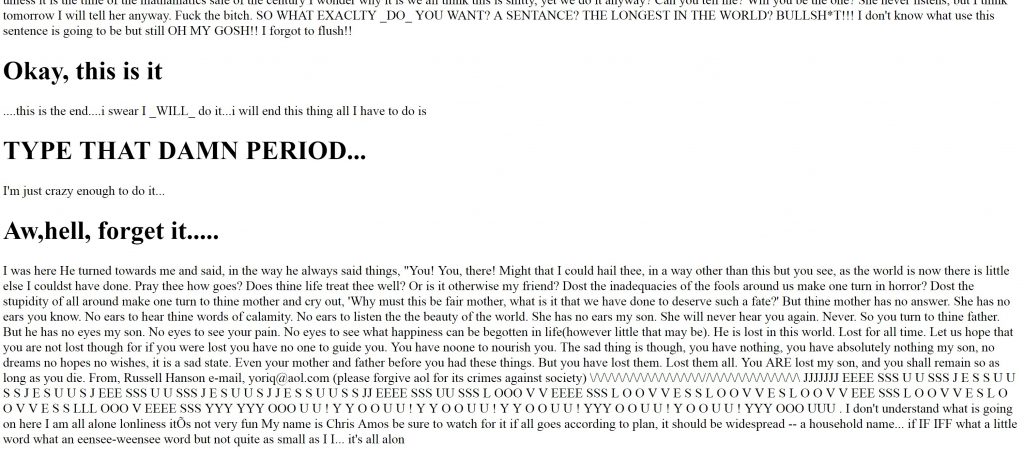Douglas Davis is a new media artist known for his satellite video performances and interactive websites. He experimented extensively with advanced and traditional technology, linking people (mostly in the 80s & 90s, with little access to the internet) to the third space. Some of his most notable works include The Last Nine Minutes, where he attempts to physically interact from the third space to the second space where the audiences are, and the World’s Longest Collaborative Sentence.
The Sentence
“The Sentence has no end. Sometimes I think it had no beginning. Now I salute its authors, which means all of us. You have made a wild, precious, awful, delicious, lovable, tragic, vulgar, fearsome, divine thing.”
—Douglas Davis, 2000
The World’s Longest Collaborative Sentence by Douglas Davis is an internet art based solely on participation, consisting of massive collaborations from all around the world. Users can contribute to the never-ending sentence and write anything in any language, but without periods. The concept behind the work is to connect people in the third space through the contribution of their thoughts.
The content is entirely made up of these inputs by people from everywhere, and without these contribution, there would be no content. The original sentence attracted more than 200,000 contributions from 1994 to 200 from all around the world. The sentence not only connected people from different geographical locations, but from different time periods as well. As one of the earliest forms of iconic Internet art, this work perhaps served as a historical archive of our relationships with the third space throughout the years – with the increasing accessibility to the internet, increasing collaborations, interactions and sharing. The sentence compels people to contribute their piece and let their voices be heard, encourages energetic participation and intensive interactive within a single sentence.
We have sentences written in CAPS or bold, phrases in large point sizes, personal thoughts, short stories blending into one another, and even people trying to communicate with those messages in the same page. This creates a waterfall effect as participants often react to those before them even though all messages are anonymous. The sentences seem to grow increasingly animated with the restricted use of periods, as everyone’s emotions melded together in one single sentence.
The Sentence is a massive collaboration that is never-ending, with the potential to be kept alive forever – but in the case, has crashed due to poor conservation. Some of these included shifting of the work between servers, improperly formatted text and corrupted characters, causing the sentence to be essentially obsolete.
“For instance, when a Web-based work becomes technologically obsolete, does updated software simply restore it? Or is the piece fundamentally changed?”
– Melena Ryzik, The New York Times
While I do agree that the work is fundamentally changed by the updated technology, I feel that it is not necessarily a negative thing. It’s true meaning is not lost, as the concept and functionality still remains. As technology advances and changes a little every day, the software should be kept updated to provide an easily accessible platform to people. In this way, the flow of activities can be optimised and the most authentic third space interactions can be recorded through decades to form an ever-growing collective narrative.
References
http://www.afsnitp.dk/udefra/1/dd/whoisdd.html
http://www.nytimes.com/2013/06/10/arts/design/whitney-saves-douglas-daviss-first-collaborative-sentence.html?mcubz=1
http://rhizome.org/editorial/2013/jun/12/restoring-douglas-davis-collaborative-sentence/
http://whitney.org/Exhibitions/Artport/DouglasDavis#mmi_83188






You brought up a very interesting point: whereas World Longest Collaborative Sentence was originally intended to go on forever and ever, a single sentence co-authored by multiple participants, in fact, the world came to end because the technology became outdated and was no longer active as a live work of net art. However, the Whitney saved the piece from the digital junkyard, as it were, bringing it back to life, more or less. It is in fact now largely a historic relic and a document of a fantastical idea to use the Web in its most daring form and function. Great research.